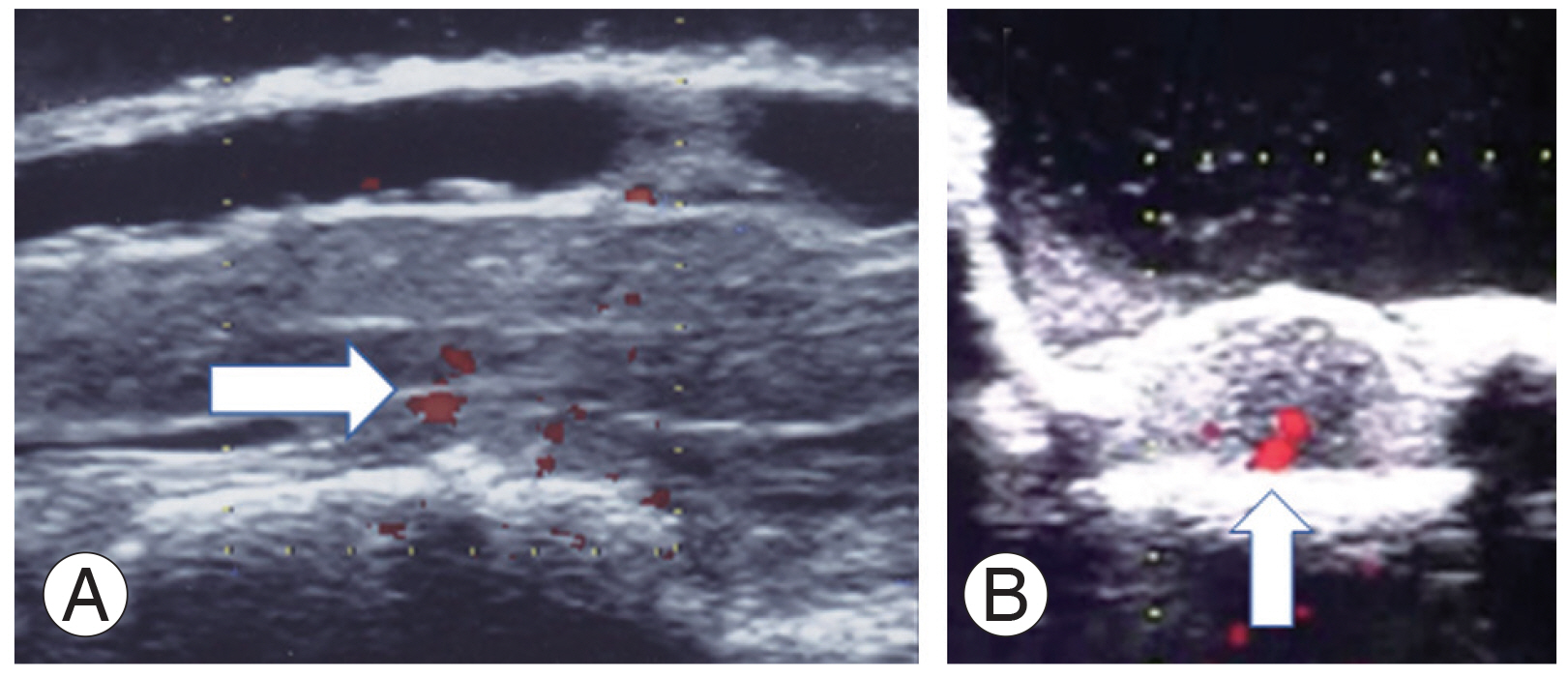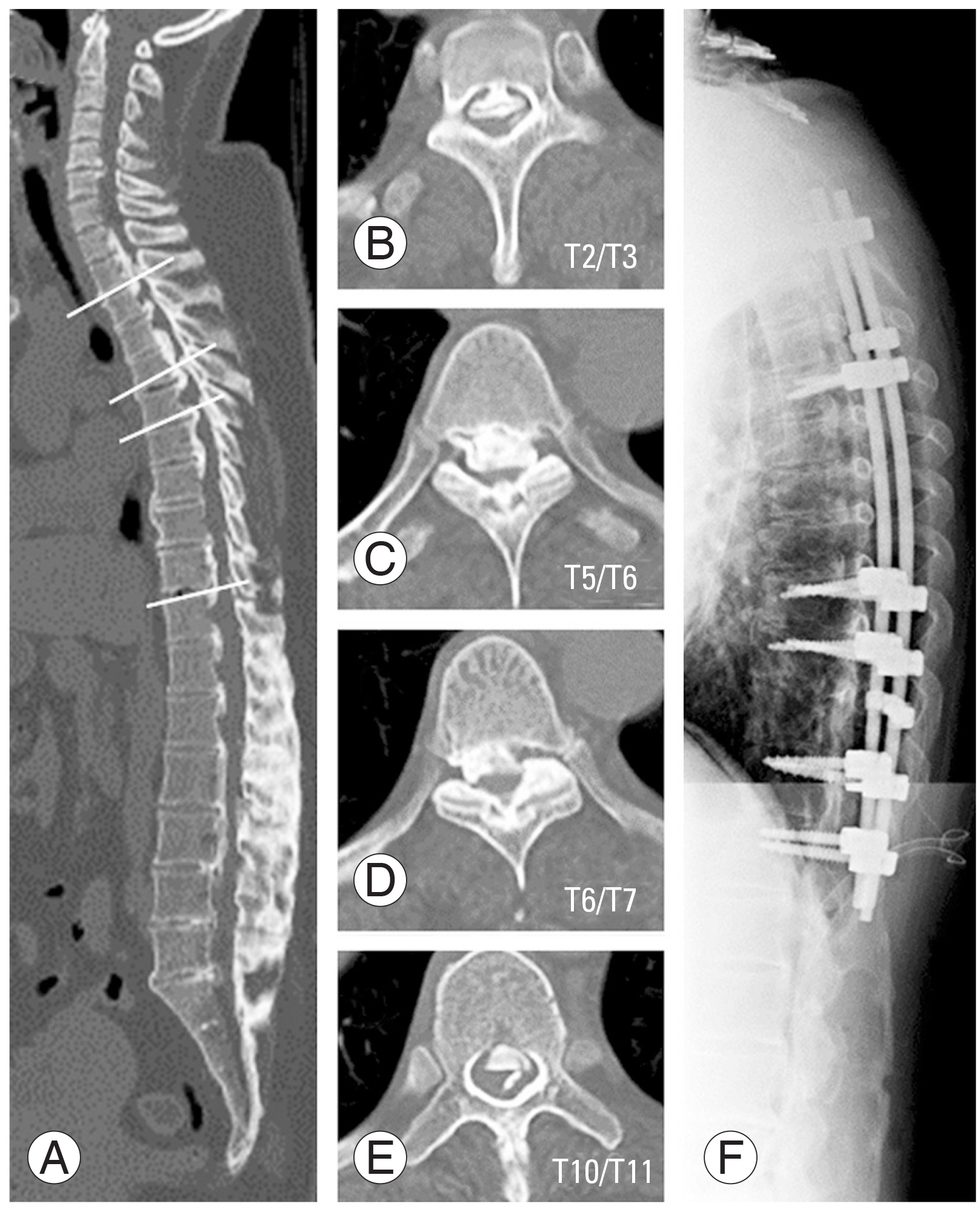1. Matsuyama Y, Yoshihara H, Tsuji T, et al. Surgical outcome of ossification of the posterior longitudinal ligament (OPLL) of the thoracic spine: implication of the type of ossification and surgical options. J Spinal Disord Tech 2005;18:492ŌĆō7.

2. Matsumoto M, Toyama Y, Chikuda H, et al. Outcomes of fusion surgery for ossification of the posterior longitudinal ligament of the thoracic spine: a multicenter retrospective survey: clinical article. J Neurosurg Spine 2011;15:380ŌĆō5.

3. Matsunaga S, Nakamura K, Seichi A, et al. Radiographic predictors for the development of myelopathy in patients with ossification of the posterior longitudinal ligament: a multicenter cohort study. Spine (Phila Pa 1976) 2008;33:2648ŌĆō50.

4. Kawahara N, Tomita K, Murakami H, et al. Circumspinal decompression with dekyphosis stabilization for thoracic myelopathy due to ossification of the posterior longitudinal ligament. Spine (Phila Pa 1976) 2008;33:39ŌĆō46.


5. Lazorthes G, Gouaze A, Zadeh JO, Santini JJ, Lazorthes Y, Burdin P. Arterial vascularization of the spinal cord: recent studies of the anastomotic substitution pathways. J Neurosurg 1971;35:253ŌĆō62.

6. Imagama S, Ando K, Takeuchi K, et al. Perioperative complications after surgery for thoracic ossification of posterior longitudinal ligament: a nationwide multicenter prospective study. Spine (Phila Pa 1976) 2018;43:E1389ŌĆō97.

7. Yoshida G, Ando M, Imagama S, et al. Alert timing and corresponding intervention with intraoperative spinal cord monitoring for high-risk spinal surgery. Spine (Phila Pa 1976) 2019;44:E470ŌĆō9.


8. Ando K, Kobayashi K, Machino M, et al. Wave changes in intraoperative transcranial motor-evoked potentials during posterior decompression and dekyphotic corrective fusion with instrumentation for thoracic ossification of the posterior longitudinal ligament. Eur J Orthop Surg Traumatol 2019;29:1177ŌĆō85.


9. Kobayashi S, Matsuyama Y, Shinomiya K, et al. A new alarm point of transcranial electrical stimulation motor evoked potentials for intraoperative spinal cord monitoring: a prospective multicenter study from the Spinal Cord Monitoring Working Group of the Japanese Society for Spine Surgery and Related Research. J Neurosurg Spine 2014;20:102ŌĆō7.


10. Chappell ET, Moure FC, Good MC. Comparison of computed tomographic angiography with digital subtraction angiography in the diagnosis of cerebral aneurysms: a meta-analysis. Neurosurgery 2003;52:624ŌĆō31.


11. Hyodoh H, Shirase R, Kawaharada N, et al. MR angiography for detecting the artery of Adamkiewicz and its branching level from the aorta. Magn Reson Med Sci 2009;8:159ŌĆō64.


13. Biglioli P, Spirito R, Roberto M, et al. The anterior spinal artery: the main arterial supply of the human spinal cord: a preliminary anatomic study. J Thorac Cardiovasc Surg 2000;119:376ŌĆō9.


14. Biglioli P, Roberto M, Cannata A, et al. Upper and lower spinal cord blood supply: the continuity of the anterior spinal artery and the relevance of the lumbar arteries. J Thorac Cardiovasc Surg 2004;127:1188ŌĆō92.


15. Svensson LG. Management of segmental intercostal and lumbar arteries during descending and thoracoabdominal aneurysm repairs. Semin Thorac Cardiovasc Surg 1998;10:45ŌĆō9.


16. Gharagozloo F, Larson J, Dausmann MJ, Neville RF Jr, Gomes MN. Spinal cord protection during surgical procedures on the descending thoracic and thoracoabdominal aorta: review of current techniques. Chest 1996;109:799ŌĆō809.


17. Anderson DK, Means ED. The effect of laminectomy on spinal cord blood flow, energy metabolism and ATPase activity. Paraplegia 1985;23:58.


18. Anderson DK, Nicolosi GR, Means ED, Hartley LE. Effects of laminectomy on spinal cord blood flow. J Neurosurg 1978;48:232ŌĆō8.


19. Kobrine AI, Doyle TF, Martins AN. Spinal cord blood flow in the rhesus monkey by the hydrogen clearance method. Surg Neurol 1974;2:197ŌĆō200.

20. Hashizume Y, Iijima S, Kishimoto H, Yanagi T. Pathology of spinal cord lesions caused by ossification of the posterior longitudinal ligament. Acta Neuropathol 1984;63:123ŌĆō30.


21. Kameyama T, Hashizume Y, Ando T, Takahashi A, Yanagi T, Mizuno J. Spinal cord morphology and pathology in ossification of the posterior longitudinal ligament. Brain 1995;118(Pt 1): 263ŌĆō78.


23. Zhang Z, Wang H. Is the ŌĆ£snake-eyeŌĆØ MRI sign correlated to anterior spinal artery occlusion on CT angiography in cervical spondylotic myelopathy and amyotrophy? Eur Spine J 2014;231541ŌĆō7.

24. Gailloud P. The artery of von Haller: a constant anterior radiculomedullary artery at the upper thoracic level. Neurosurgery 2013;73:1034ŌĆō43.

25. Tsuji T, Matsuyama Y, Sato K, Iwata H. Evaluation of spinal cord blood flow during prostaglandin E1-induced hypotension with power Doppler ultrasonography. Spinal Cord 2001;39:31ŌĆō6.


26. DePalma RG, Olding M, Yu GW, et al. Vascular interventions for impotence: lessons learned. J Vasc Surg 1995;21:576ŌĆō84.


27. Ohtake H, Urayama H, Katada S, et al. Prevention of spinal cord ischemia by selective intercostal arterial infusion of prostaglandin E1. J Vasc Surg 1998;28:301ŌĆō7.
















